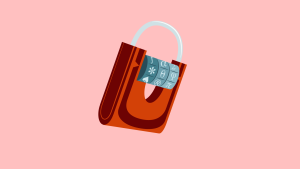Unicode is an encoding standard for ensuring the consistent handling of text by computers and other devices. The full Unicode collection spans more than 110,000 characters, but aside from the full Latin alphabet, numerals and punctuation symbols, the most recognisable characters are probably emoji – small pictorial representations of things: faces, a thumbs up or a sun.
A recent update to the Unicode Standard added 2834 characters – including the middle finger.
Different apps and devices require different methods for accessing Unicode characters, but typically on a Mac you can access them via the special characters interface, usually found in a given program’s ‘edit’ menu. In Windows, run the Character Map program.
When you want to use Unicode characters in your web projects, you must use special codes. A full list is available here, but here are 10 useful Unicode characters, along with the code to paste them into an html file (just remove the space between the ‘&’ and the next character), to get you started.
| Character name | html code |
| • Circular Bullet Point | & #8226; or & bull; |
| … Horizontal ellipsis | & #8230; or & hellip; |
| — Em dash | & #8212; or & mdash; |
| € Euro symbol | & #8364; or & euro; |
| ™ Trade mark | & #8482; or & trade; |
| ≠ Not-equal to | & #8800; or & ne; |
| ← Left Arrow | & #8592; or & larr; |
| → Right Arrow | & #8594; or & rarr; |
| ↑ Up Arrow | & #8593; or & uarr; |
| ↓ Down Arrow | & #8595; or & darr; |
Frequently Asked Questions (FAQs) about Using Unicode to Create Bullet Points, Trademarks, Arrows
How can I use Unicode to create bullet points in my text?
Unicode is a universal character encoding standard that allows you to represent text from any language, and it includes symbols like bullet points. To insert a bullet point using Unicode, you simply need to use the Unicode character for a bullet point, which is U+2022. In HTML, you can use the entity • to represent a bullet point. For example, if you’re writing an HTML document, you can insert a bullet point like this: • This is a bullet point.
Can I use Unicode to create different types of bullet points?
Yes, Unicode includes a variety of different bullet point styles. For example, the Unicode character U+2023 represents a triangular bullet point, while U+25E6 represents a white bullet point. You can use these different bullet point styles to add variety to your text and make it more visually interesting.
How can I use Unicode to represent trademarks in my text?
Unicode includes characters for both the registered trademark symbol (®) and the trademark symbol (™). The Unicode character for the registered trademark symbol is U+00AE, and for the trademark symbol, it’s U+2122. In HTML, you can use the entities ® and ™ to represent these symbols. For example, you can write MyBrand™ to represent “MyBrand™”.
Can I use Unicode to create arrows in my text?
Yes, Unicode includes a wide range of arrow symbols. For example, the Unicode character U+2190 represents a leftwards arrow, while U+2192 represents a rightwards arrow. You can use these arrow symbols to guide readers through your text or to represent directional information.
How can I find the Unicode character for a specific symbol?
There are many online resources where you can look up Unicode characters. One such resource is the official Unicode website, which includes a comprehensive list of all Unicode characters. You can also use online tools like Compart’s Unicode lookup tool, which allows you to search for Unicode characters by name or by their hexadecimal code.
How can I insert a Unicode character into my text?
To insert a Unicode character into your text, you need to know its hexadecimal code. Once you have this code, you can insert the character by typing &# followed by the hexadecimal code and then a semicolon. For example, to insert a bullet point, you would type •.
Can I use Unicode characters in any text editor?
Most modern text editors support Unicode, so you should be able to use Unicode characters in any text editor. However, some older text editors may not fully support Unicode, so you may encounter issues if you’re using an older editor.
Are there any limitations to using Unicode?
While Unicode is a powerful tool for representing text, it does have some limitations. For example, not all fonts support all Unicode characters, so you may find that some characters don’t display correctly in certain fonts. Additionally, some older systems may not fully support Unicode, which can cause compatibility issues.
Can I use Unicode in programming languages?
Yes, most modern programming languages support Unicode, so you can use Unicode characters in your code. However, the way you insert Unicode characters can vary depending on the programming language. For example, in JavaScript, you can insert a Unicode character using the \u escape sequence followed by the hexadecimal code of the character.
How can I learn more about Unicode?
There are many resources available if you want to learn more about Unicode. The official Unicode website is a great place to start, as it includes a wealth of information about the standard. There are also many books and online tutorials that can help you learn more about Unicode and how to use it effectively.
 Adam Roberts
Adam RobertsAdam is SitePoint's head of newsletters, who mainly writes Versioning, a daily newsletter covering everything new and interesting in the world of web development. He has a beard and will talk to you about beer and Star Wars, if you let him.


